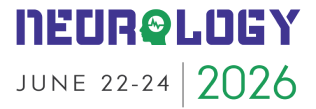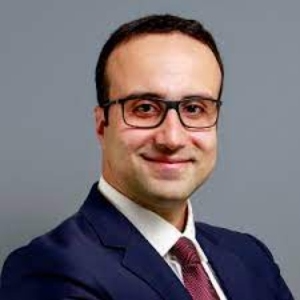Title : Clinical improvement of visual complaints in benson’s symdrome with TPS-treatment: A case series on atypical dementia
Abstract:
Background: Atypical dementias often go unrecognized in everyday clinical practice. In 1988, Frank Benson and colleagues first described a case series of 5 patients with progressive visual complaints in the form of Balint's syndrome (visual ataxia, ocular apraxia, simultanagnosia) caused by a brain disease, which they summarized as "posterior cortical atrophy" (PCA). The further clinical course is similar to a neurodegenerative disease, with progressive atrophy starting from posterior changes and involving temporal and frontal lobes, but in contrast to Alzheimer's dementia (AD), hippocampal and entorhinal regions show a lower rate of atrophy. A causal therapy does not yet exist.
Methods: In this case report, we report on a 69-year-old right-handed patient whose everyday life (with an unremarkable ophthalmologic exclusion diagnosis) was mainly impaired by visual complaints (Balint syndrome). As a result, she was barely able to read or manage her household. Neuropsychological and liquor diagnostic findings were typical of Alzheimer's disease. Magnetic resonance imaging diagnosed PCA, which was objectified using morphological and computer-aided analyses. We treated the patient with TPS over a period of 2 months. The principle of TPS is based on ultrashort ultrasound pulses in the microsecond range, which act on mechano-sensitive channels of the nerve cell membrane by means of mechanical effects and lead to a change in transmitters and the release of growth factors by stimulating neuronal networks. Animal experiments have shown that this leads to microglia activation and plaque reduction. The patient in our case study received 6 therapy sessions within 2 weeks and a further therapy session after 6 weeks with an energy quantity of 0.2 mJ/mm² per individual pulse with a total number of pulses of 6000/session and a frequency of 4 Hz. Thanks to 3D navigation based on MRI images of the patient, an individual pulse application was carried out using the Neurolith device from Storz Medical. The pulses were applied bilaterally to the frontal, parietal and temporal cortex and an additional 800 pulses were applied to each occipital lobe. To test executive function, the color-word interference test (Stroop test) was used with the following pre/post design: t0 pre-stimulation: t1 after 6 treatments, t2 a further 6 weeks later.
Results: After the first three treatment sessions, the patient already reported a significant reduction in her visual complaints: She was able to read well and, according to external anamnesty, was also able to manage her household "without any problems" again. She also achieved better results in the Stroop test after 2 (t1) and 6 weeks later (t2).
Audience Take Away Notes:
- Using transcranial pulse stimulation (TPS), initial studies have shown improvements in cognition in AD patients using neuropsychological tests. The aim of our observational study was to investigate the possible effects of TPS in a PCA patient whose main complaint was visual impairment (Balint syndrome).
- Learning Objectives
- Presenting innovative non-invasive brainstimulation procedures: showing alternative/additional stimulation methods to TMS.
- To show various treatment options for TPS: expanding the treatment spectrum thanks to specific stimulation targets.
- Identifying treatment alternatives for Benson’s syndrome: supplementing the range of treatment options by TPS.




